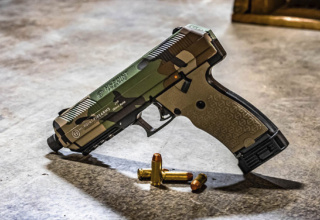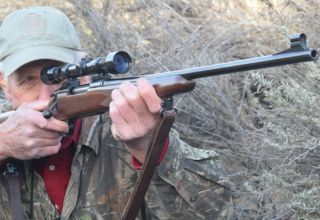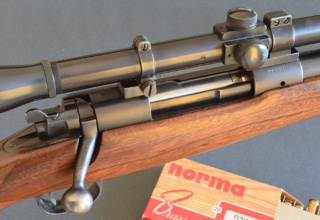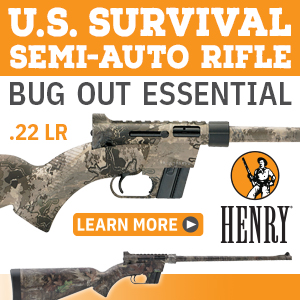Whatever the design or the load, when you need back-up, speed and accuracy trump all
by Wayne van Zwoll
Two Pony and his partner had gathered most of the cattle and headed them down-country before the storm broke. The cowboys settled in at a line camp as snow fell. At daybreak, looking for stragglers, they followed tracks to the first. It was dead.
The grizzly rushed them without a sound. Two Pony turned, pulling his .38-40. It popped twice. Then the bear killed him. Diving for the revolver, his companion was struck down by a great paw. Claws shredded his face. He would recall the bear’s stench and the taste of his own blood, but not the shot that drove a bullet into the bear’s chin up into its brain.
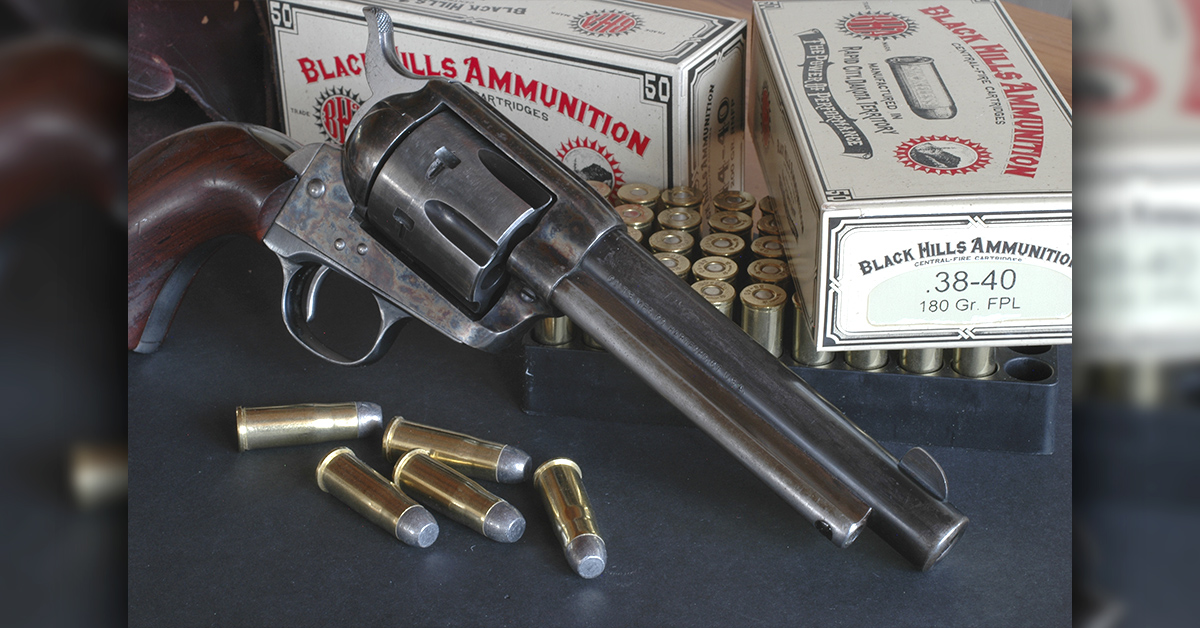
A century ago, when these men met a bear, the .38-40 sent 180-grain .401 bullets at 850 fps. Same-weight bullets in the .40 S&W and .45 ACP now hit harder. All would have been thought powerful loads at that time. Trappers packed .22 rimfire pistols to finish their catch. The .38 Special was a potent upgrade in service revolvers, from the .38 Long Colt. The .357 and .44 Magnums were decades away.
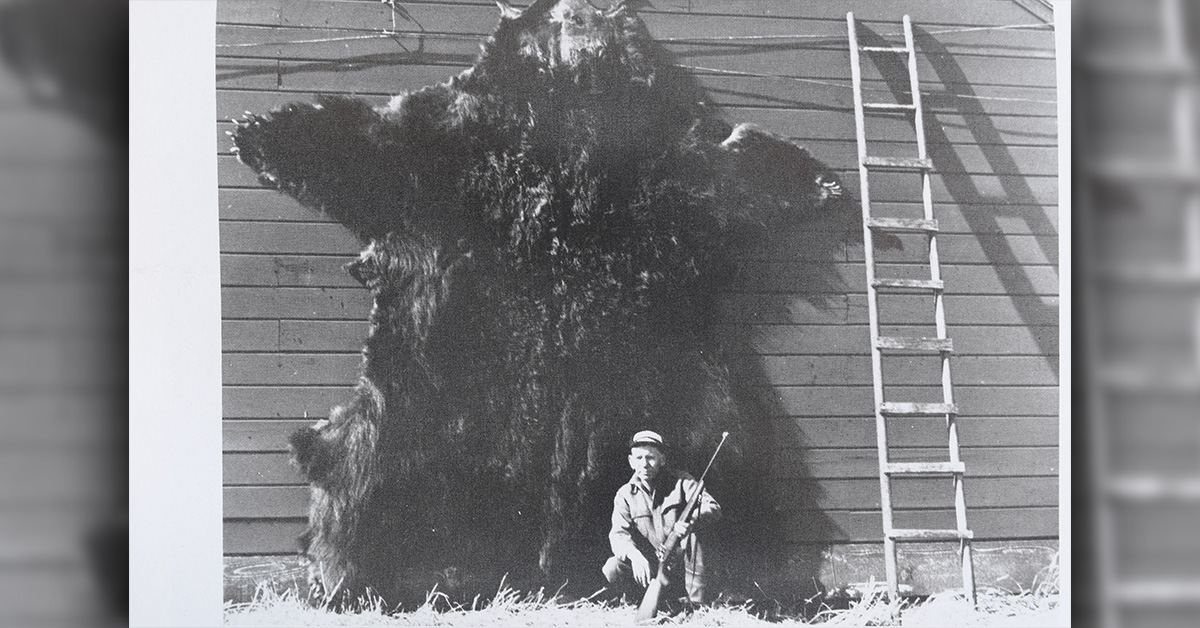
Well into the 20th century, grizzlies and cattlemen gave each other no quarter. But protection has reversed a decline in bear numbers. During the last 50 years, grizzlies have increased. So have dustups between bears and people. Last year in Montana, Rudy Noorlander lost part of his face to a grizzly that attacked as he trailed a wounded deer. Bear spray was in his pack; his handgun reportedly misfired. Also recently in Montana, a hunter was mauled and his guide killed by a grizzly as they field-dressed an elk.
Bear attacks make news because they’re rare. If you never go where bears live, you’ve no risk. If you routinely share the woods with black or grizzly bears, you’ll see some. Almost all will run off.
Incidentally, a study of bear attacks in Canada between 1929 and 1979 showed black and grizzly bears about equally culpable: 72 assaults by wild black bears, 80 by grizzlies. Of the people killed (12 by black bears, 14 by grizzlies), half had been fed upon. Data from Alaska differed. There, only 19 of 170-odd reported maulings since 1900 were attributed to black bears. Reason: While Alaska and Canada have roughly equal numbers of grizzlies, Canada has four times as many black bears as Alaska. Grizzly attacks usually result from perceived threat to cubs or a carcass; black bears that kill people view them as prey.
Whichever of these bears you encounter, your behavior has much to do with how they respond.
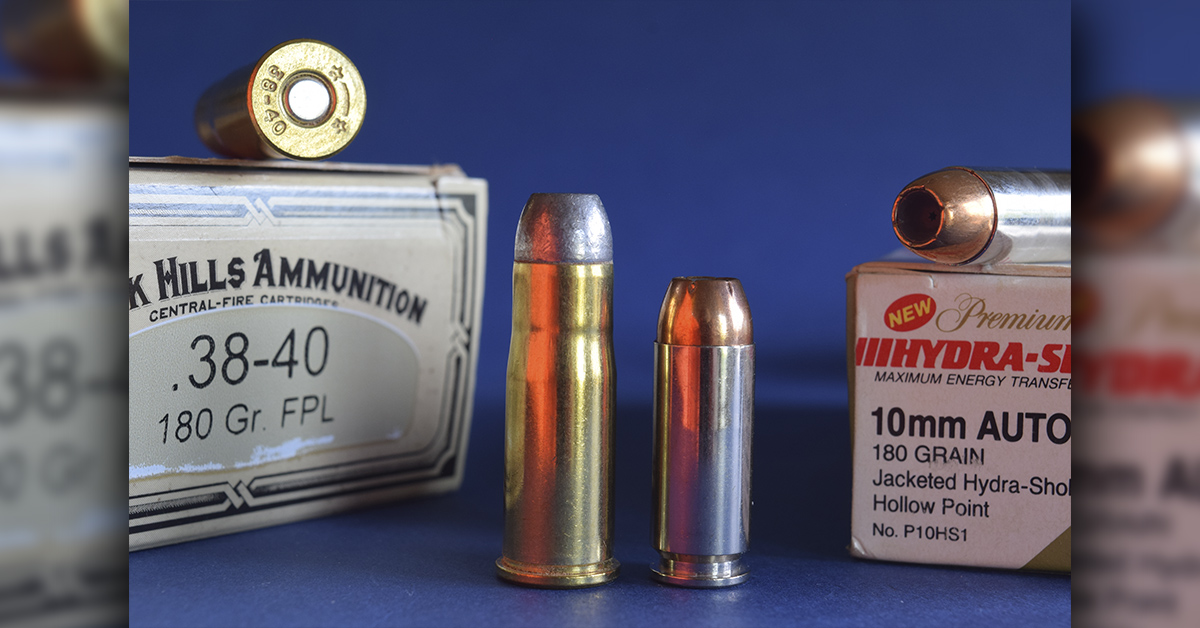
A friend, Ron Dube, spent a career outfitting in grizzly country, on the hem of Yellowstone Park. He never had to shoot a bear.
“I stayed alert. When I came upon bears, I kept calm and didn’t show fear. A grizzly followed his nose to fish frying in my spike camp. I yelled at him to leave. He did.” Dube said he was truly alarmed just once. “A client and I happened upon a big griz on a carcass. Unaware of us, he paced, growling and bristling, owning the kill. A dangerous bear. We backed off.”
Bluffing or firing a bullet near a bear not defending a kill or cubs often sends the beast away. One day, a couple of hunters from a camp I shared heard brush pop behind them. Their guide fired his .357 into the earth in front of two oncoming bears. The sow dashed passed the trio on one side, her half-grown cub on the other. Bear traffic in that area was so heavy, paw prints on trails had erased those of pack stock.
Much has been written about handguns to stop bears. Where legal, they’re an alternative to bear spray, with the same limitations. Each must be deployed right away, and the payload must land where it takes immediate effect — a bullet turning, not just hitting, the bear. Spray must reach its face. A grizzly can sprint at over 30 mph and move fluidly as a cat. A surprise meeting gives you little time to aim.
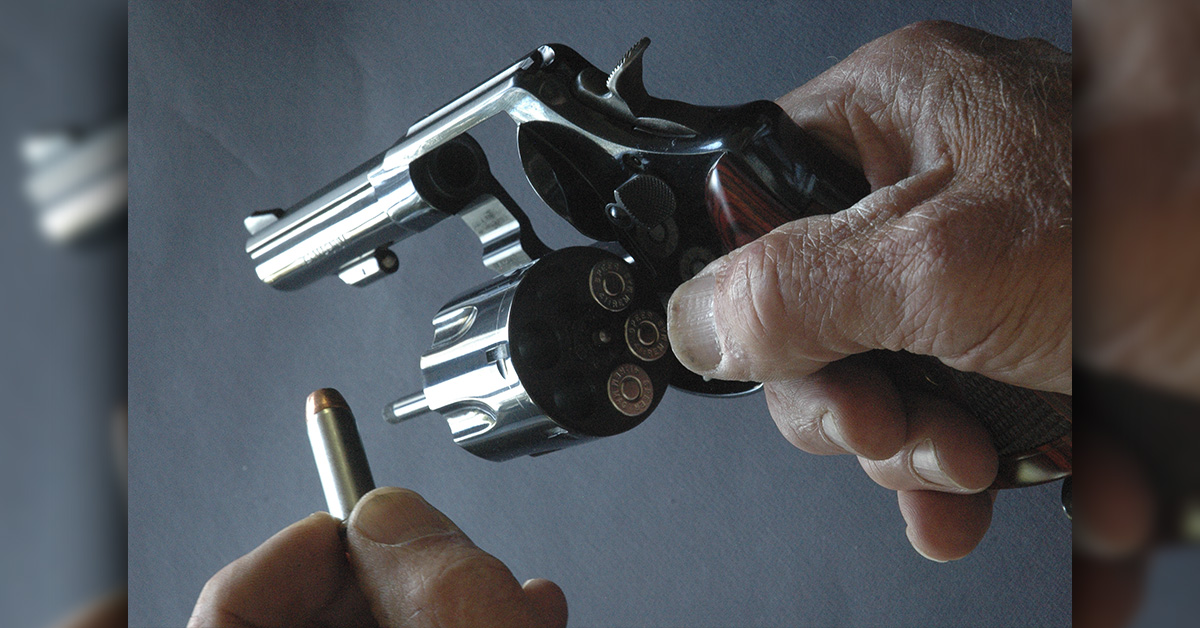
An advantage of spray: It doesn’t harm the bear. As in thwarting a thug, the goal is to stop, not to kill. Lethal action brings a heavy load of responsibility. A dead assailant is an accepted risk, not the goal.
A pistol is easier to point than a spray can, and many hunters prefer it. But the best handgun may not be the most powerful. Consider a “woods pistol” that’s smaller, gentler in recoil and more versatile.
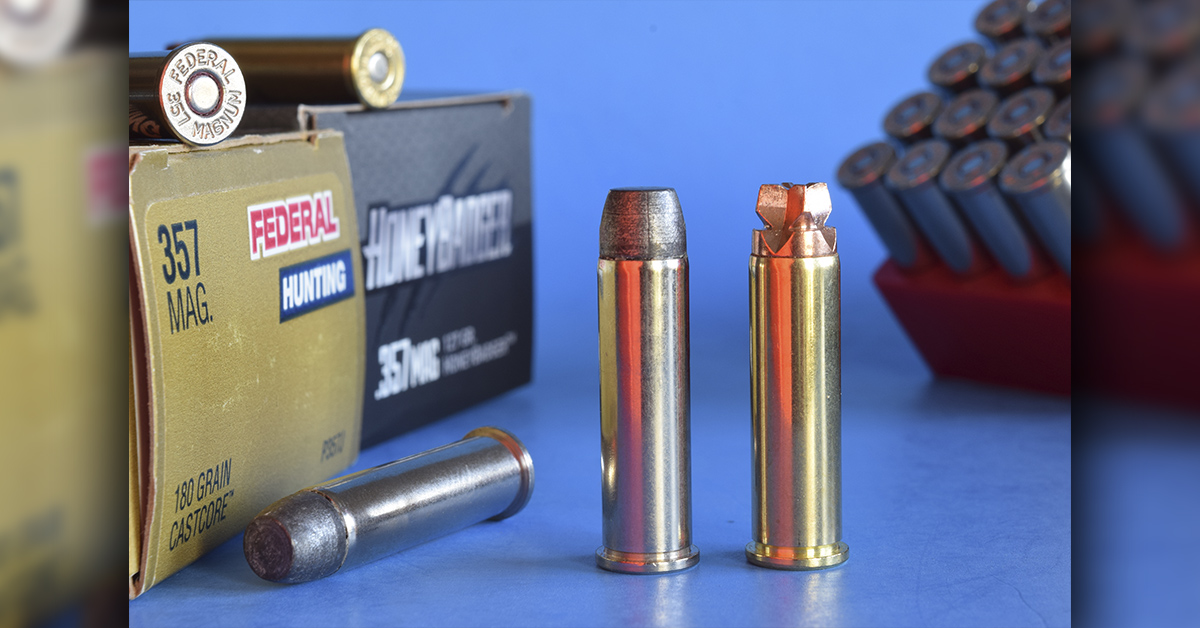
“I emptied my .44 into its belly as it ran me over,” an Alaskan guide told me. He’d followed the brown bear into a thicket, thinking his client’s shot had been fatal. “That animal probably just wanted an exit. If it had been out for blood, I’d have been more disappointed in my Magnum.”
But bears aren’t bulletproof. A veteran outfitter reported shooting a grizzly with his 9mm. “My clients, behind me in tall grass, had fishing tackle; I had my little pistol. When a bear appeared close by, they wisely dropped into the cover. The bear was so near them, I thought it a real threat. So, I fired into its front ribs. It turned, and I fired into its other side.” Repeat aimed shots brought it down.
This fellow noted three things often given short shrift in blather about back-up guns. First, to be useful, a handgun must be quick to hand — small enough and light enough that you wear it as routinely as you wear a belt, without thinking about whether to strap it on.
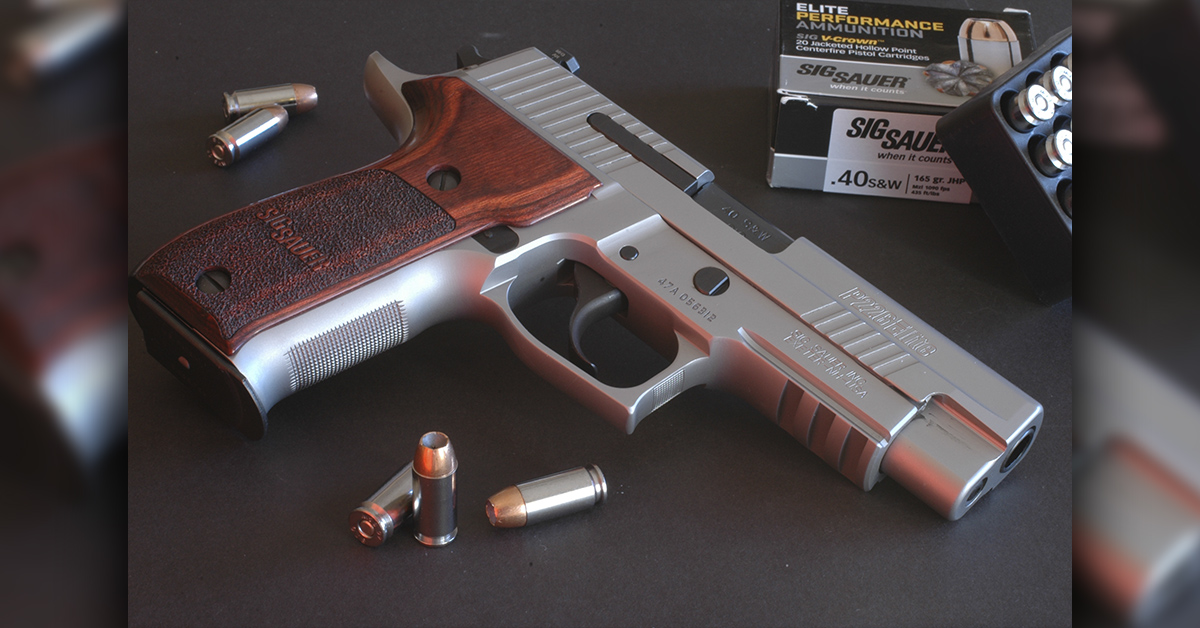
“I usually carry a .44 revolver,” he admitted. “Ballistically, it’s a better bear gun. But when it’s not with me, it’s no bear gun at all.”
A woods pistol must point naturally, too, so you can fire quickly, repeatedly and with acceptable accuracy — with one hand, if your other is disabled. Again, a beefy .44 Magnum or .454 Casull, let alone a S&W in .460 or .500, don’t qualify. Finally, bullets must penetrate. Softpoints that kill with rib shots when you’re hunting bears may not plow deep enough from the front. Don’t count on pulping the brain unless, with your heart in your throat, you can hit a tennis ball hurtling toward you at 30 mph.
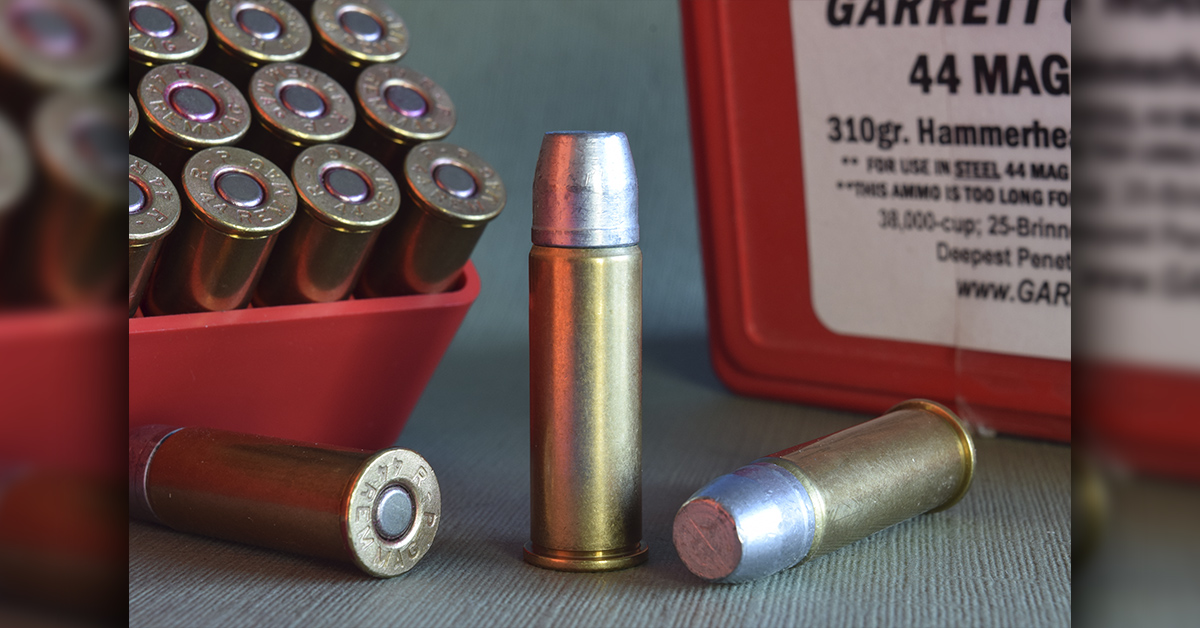
Revolvers, long preferred for their reliability, are bored for more powerful cartridges than offered in most autoloaders. But they no longer have a big edge. Top-shelf autos are sunrise-reliable now. Several come in 10mm, a .40-bore ballistic match to the .357 Magnum (which in S&W K-frame revolvers has less weight and bulk than N-Frame magnums). With 180-grain Solid Core bullets, Federal loads for the .357 bring 780 ft-lbs out the muzzle. For the 10mm, Buffalo Bore lists a 220-grain hard-cast bullet at 1,200 fps, for 703 ft-lbs. Grizzly Cartridge catalogs that load, too, also a 200-grain flat-nose at 1,250 fps, for 694 ft-lbs. Federal 200-grain 10mm Solid Cores exit with 640 ft-lbs. Black Hills stokes its 115-grain Honey Badgers 400 fps faster to produce 655 ft-lbs. A step down on the power scale but with 440 ft-lbs still formidable: Federal Solid Core and Black Hills Honey Badger loads in .40 S&W and .45 ACP.
Besides their flat, packable profiles, autos hold more cartridges than revolvers. That may be of no concern in most instances; but bears can be tenacious.
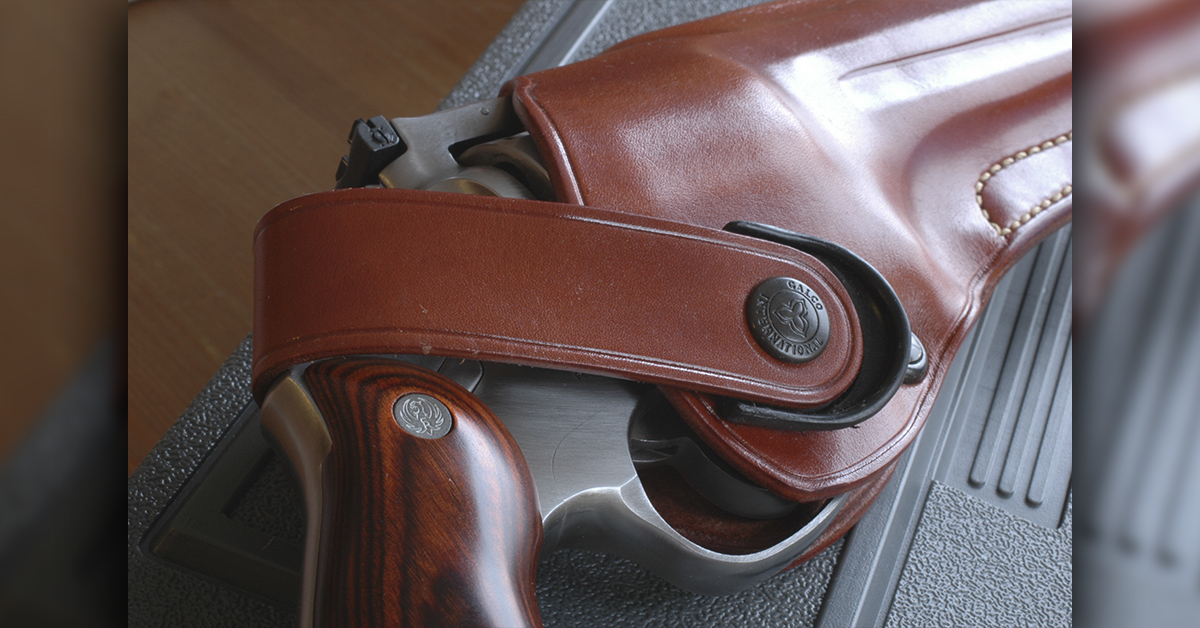
Recently, Idaho bowhunter Riley Hill and his partner Braxton Meyers were charged by a grizzly. Dropping his bow, Hill managed to fire four shots from his handgun before the animal grabbed his arm, “ripping it apart.” Meyers took careful aim with his pistol, as the bear was on top of Hill. It died after 24 shots. News reports had no details on the loads or the hits. Meyers’ first aid, and a helicopter, saved Hill.
Lightweight metals and polymers make modern revolvers and autos less a burden than they were in the 1950s, when the .44 Magnum appeared. Less heralded but as important: improvements in holsters.
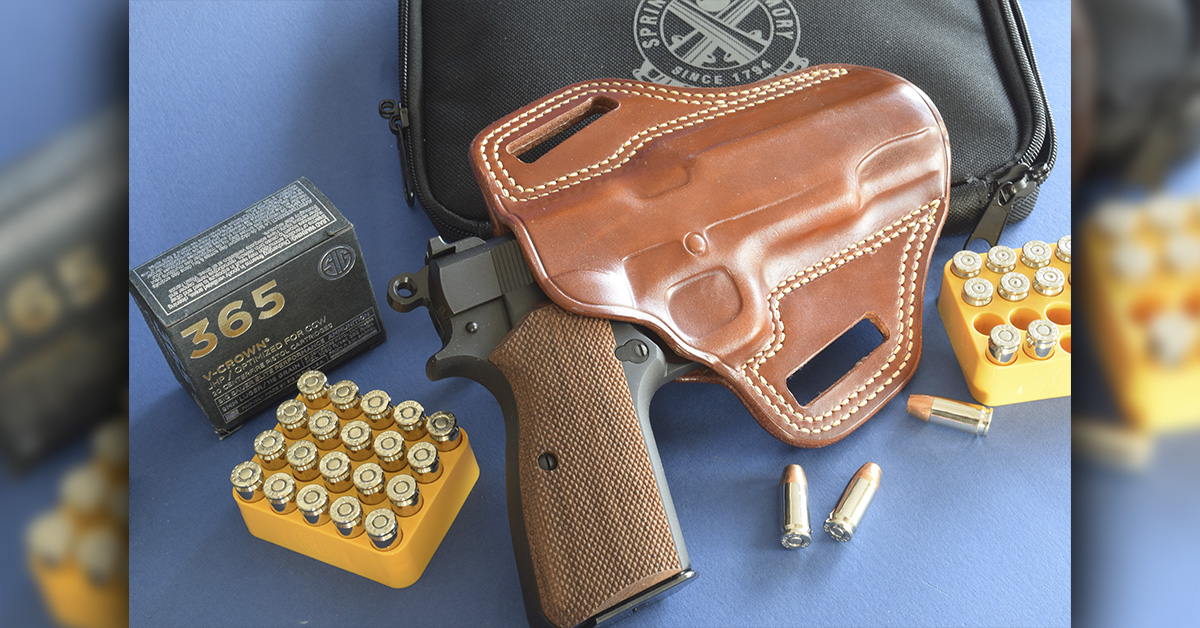
Both leather and Kydex holsters have their place and advocates. For field use, I like leather. Most of my holsters are from Galco. They’re stout, well designed, and beautifully finished. Also, Galco has a holster to fit just about every handgun. The company doesn’t market “suits all” pouches for assortments of revolvers and autos. Its holsters fit specific models for secure grip, smooth release. Many have tension adjustments. Hammer straps feature hard, oversize tabs so you won’t fumble to grab the gun.
That said, I’ve had excellent holsters from Versacarry (buffalo hide that won’t wear out), Bianchi, and 1791. Most recently, I’ve been impressed with Falco holsters (an Italian leather company that got its start making gloves for falconers).
I’ve found handguns scaling over 30 ounces or so make themselves felt on the belt in steep places and by the end of each long day afield. But my S&W K-Frame revolvers, and Colt SAAs and 1911 autos, ride comfortably in holsters on sturdy 1 ¾-inch belts. Ditto my Springfield Armory XD-M and SA-35.
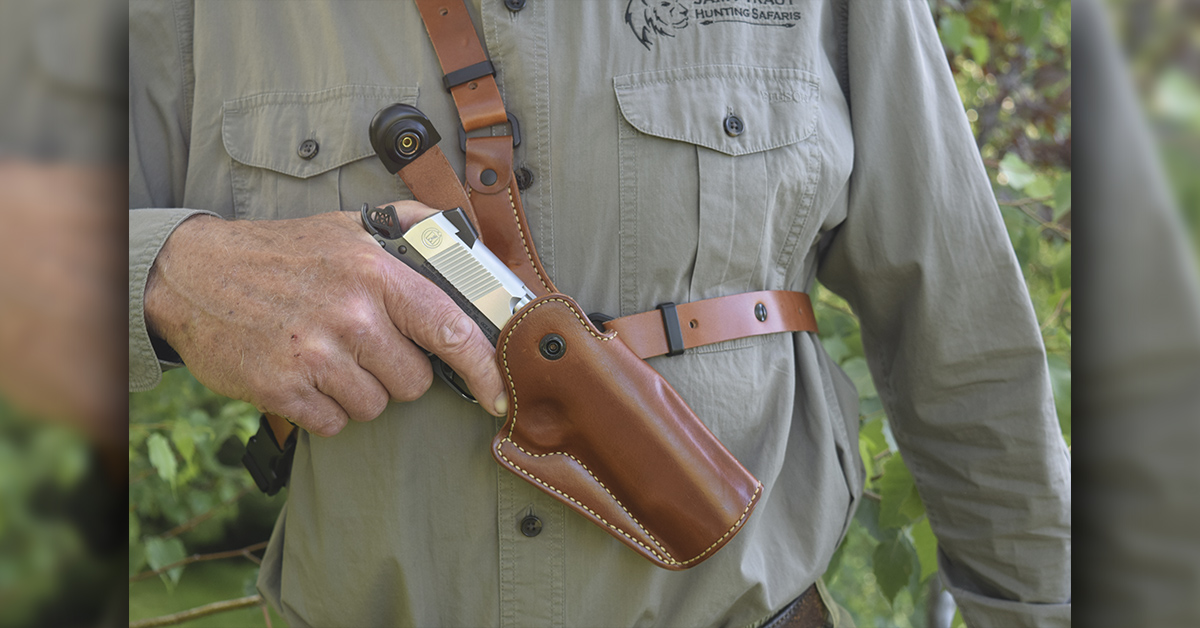
Arguably, the best place for a back-up pistol (or bear spray) is on your chest. If you see a bear too close and too late to slip away undetected, staying still makes sense, at least for the moment. Extracting a gun from your belt, you move your hand and bend your elbow away from your body. That motion is quite visible, especially if you must clear a long or heavy coat. A shoulder holster can present the same hurdles. Accessing a chest holster is quicker and begs the least movement, as you simply open your coat.
If the bear is an instant calamity and speed your only salvation, a gun (or spray can) on your chest should come to hand quicker than if it were anywhere else. If you’re knocked down, your hands naturally go to your chest to shield your vitals. You can reach a chest holster face-down in the grass, or face-up.
My favorite rig for a woods pistol — also for a hunting handgun — is Galco’s Great Alaskan chest holster, with pouches for magazines and loose ammo. I use one for 1911s, another for a 4 5/8-inch Ruger Blackhawk. Falco markets a superb holster of similar design.
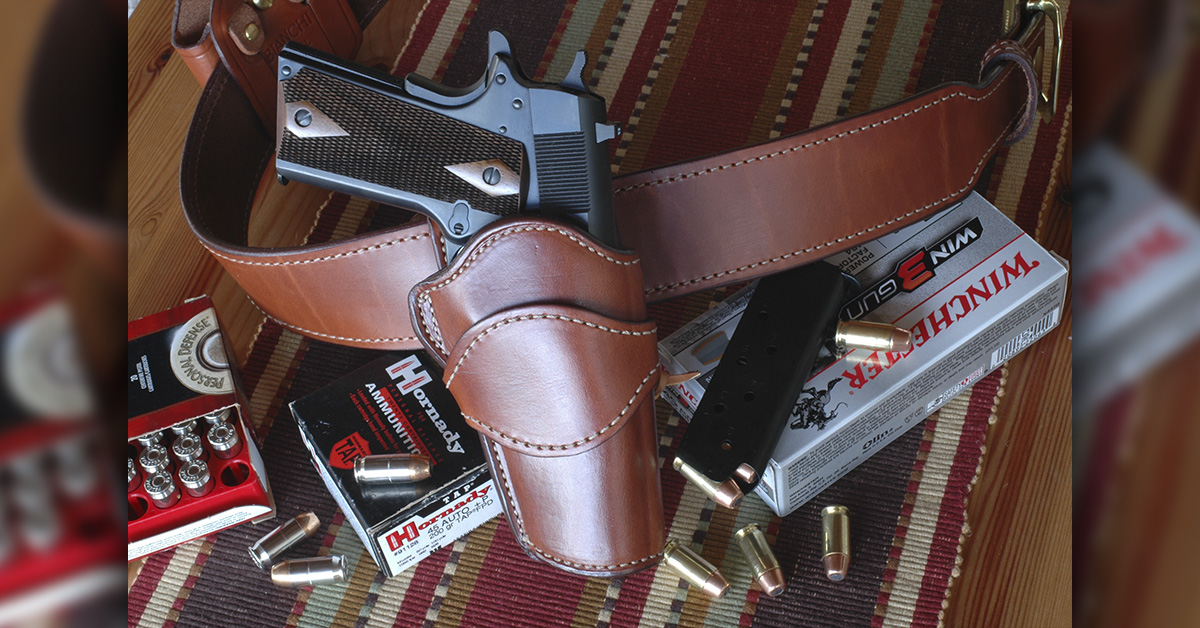
No handgun will stop a bear attack if you can’t deploy it fast and accurately. One fall day in 1988, L.W. Jones was easing through Alaskan alders when a grizzly burst upon him. Jones managed to jam his rifle’s muzzle into the bear’s mouth, only to have it wrenched away. The beast bit deep into his shoulder, tearing the holster holding a .44 Magnum. It went flying as the bear picked Jones up, shook him savagely, threw him down, mauled his head, then snatched him up by the thigh. Dashed to earth again, Jones felt claws rip into his stomach. Somehow, he lay still. After the animal left, he struggled to camp. His friends rushed him to a hospital, where surgeons put him back together.
“In bear country,” Al Johnson told me, “seeing a bear before you’re too close to avoid it can save you a lot of pain. And when you see one, you have to be smart. I wasn’t.”
In the fall of 1973, the Alaska Fish & Game biologist was photographing moose in Mt. McKinley National Park. When from the road he spied a grizzly with three cubs, he left his truck and followed them at a distance. Fading light eventually forced him to use a shorter lens. “To get better pics, I fished out a predator call, climbed 15 feet up a tree and squalled.” The sow paid him no mind at first. But then she approached at a brisk walk, cubs behind.
Johnson had stopped calling. When she closed the gap to 50 yards, he yelled to shoo her off. She came on, swatting his pack as she passed his tree. Then one of her cubs looked up and bawled.
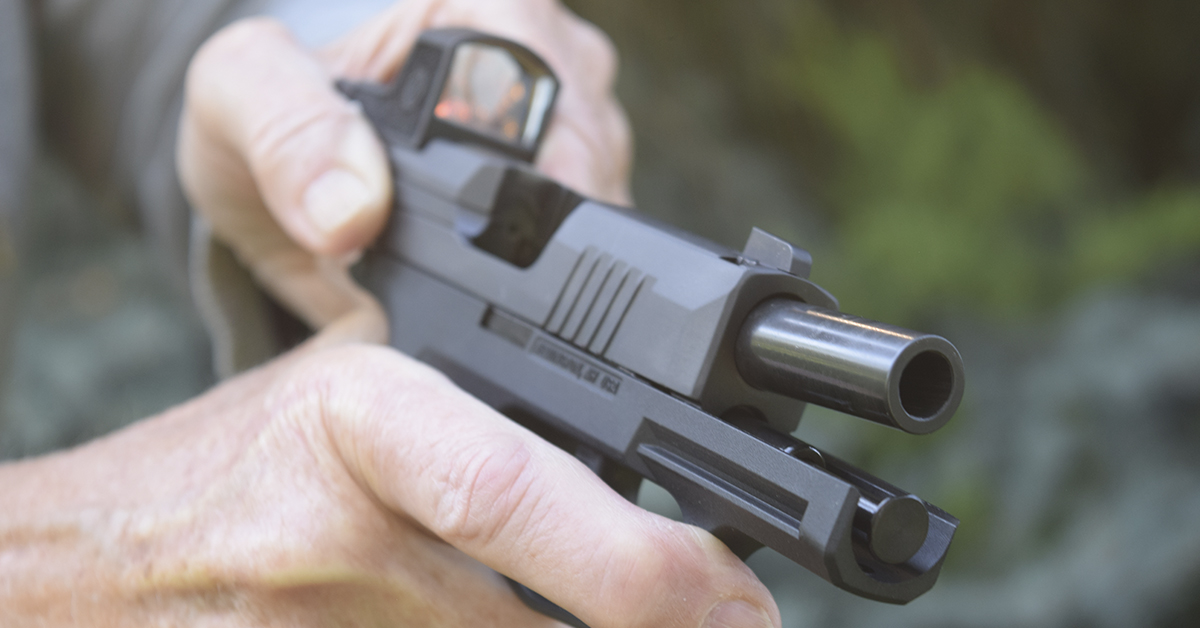
“I felt the tree shake violently,” Al recalled. “then her head and shoulders appeared at my feet. I was terrified.” The sow grabbed Johnson’s boot and tore him from the tree.
Dashed to the ground, Al turned on his stomach, clasping the back of his neck. Canines punctured his arms and scraped his skull. He dared not move. At last, the bear left. And Johnson’s luck held. After he staggered 300 yards to a remote road, a Park employee happened by. In surgery, he got four pints of blood.
What are your odds of surviving a grizzly attack? Statistically, you’ve nearly 9 chances in 10. But variables abound: the bear’s savagery and determination, the duration of the mauling, also your physical condition and how well you feign death while keeping your skull from being crushed. Prompt medical aid can be decisive. The survival rate of 89 percent doesn’t reflect damage that can permanently alter life.
Modern communications and wilderness access by helicopter have bettered the fortunes of people who, innocently, have run afoul of surly bears. Still, we are frail creatures. Bears that pick a fight can win.
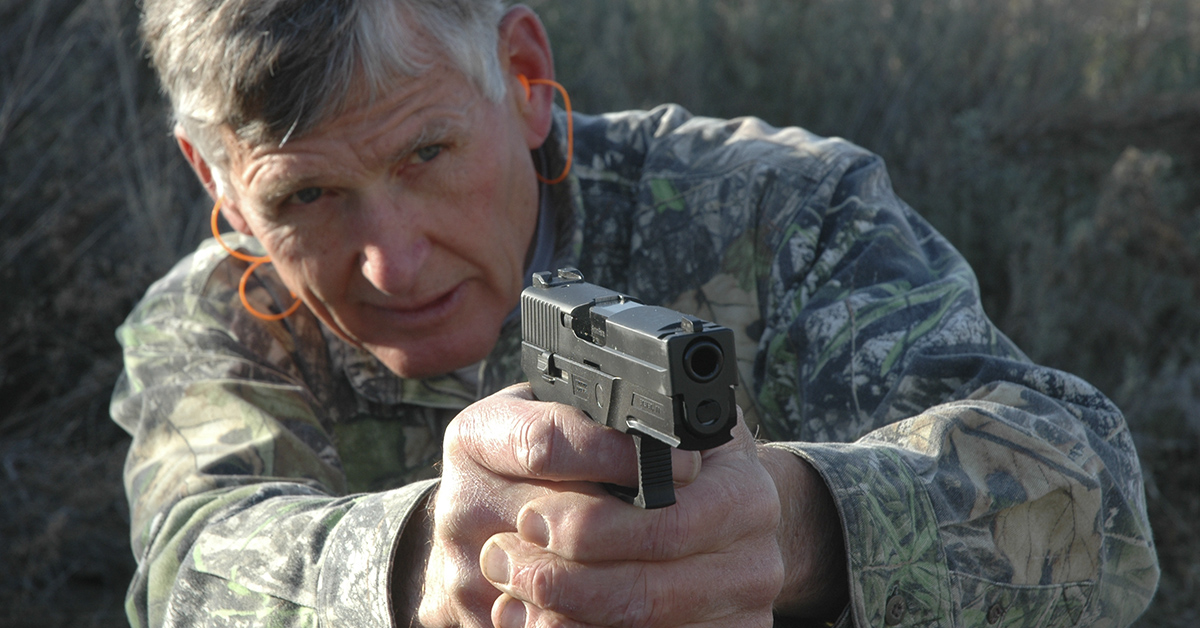
At 8 p.m. one evening last summer in Canada’s Banff National Park, veteran backpackers Jenny Gusse and Doug Inglis sent an SOS signal — a device’s emergency button held three seconds. One of them managed to text: “Bear attack bad.” Hours later, responders found them dead at their campsite, close to each other, in stocking feet, not far from their tent. An emptied can of bear spray and their dead dog lay nearby. A bear-proof food bag hung in a tree. The bruin, an old female, had not left. The rangers shot her. Parks Canada declared the incident “the first grizzly bear-caused fatality recorded in Banff in decades.”
Arguments about the best woods pistols are moot where handgun carry is illegal.


